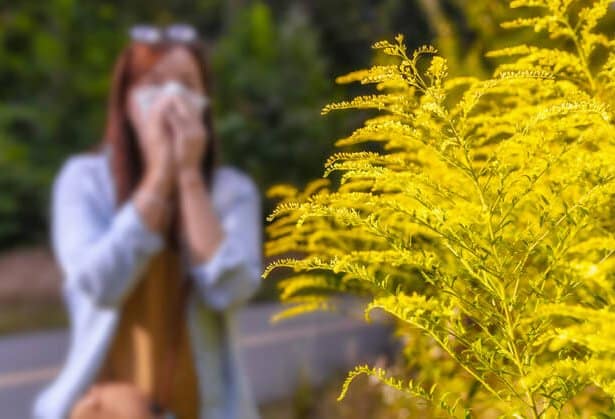As the fall season approaches, it’s time to start preparing to deal with ragweed and other fall allergens. If you experience allergy flare-ups in the late summer or fall season, it is likely that you are allergic to ragweed or are susceptible to other fall allergy triggers. At Allergy & Clinical Immunology, we’ve put together a guide on ragweed and other fall allergens to watch out for.
Common Fall Allergens
Ragweed
Ragweed is one of the most common allergy triggers in the fall. Ragweed begins to release pollen on the cool nights and warm days in August, which will continue to last through September and October. Research has shown that roughly 75% of people who have a spring plant allergy also have reactions to ragweed.
 Keep in mind that even if ragweed doesn’t grow in your area, the pollen can travel hundreds of miles through the wind.
Keep in mind that even if ragweed doesn’t grow in your area, the pollen can travel hundreds of miles through the wind.Mold
Mold is another common fall allergy trigger to watch out for. When you think of mold, you typically picture it growing in your bathroom or basement, but you also have to watch out for wet spots in the yard where mold can thrive. Be sure to keep your yard clear of piles of damp leaves where mold can grow.
Dust Mites
Dust mites are common in the humid summer months, but they can also be introduced into the air when to turn your heat on in the fall. Dust mites are tiny bugs that live in the dust throughout your home and can cause allergies.
Symptoms of Common Fall Allergens and How to Avoid Them
Ragweed Symptoms
If you are suffering from a ragweed allergy, you can expect symptoms such as a runny nose, itchy eyes, and sneezing. Ragweed can also cause asthma flare-ups. To limit your contact with ragweed and lessen symptoms:
- Stay inside during peak ragweed hours. Pollen counts are typically lower in the morning and early afternoon and higher in the evening.
- Track the pollen counts. You can check pollen counts in the newspaper or online. If counts are high, stay inside.
- Keep your windows closed at home and while driving. This will help keep the pollen out.
- Use your dryer. Hanging clothes outside can collect pollen, so it’s best to use your dryer to dry your clothing.
- Clean up after being outside. We recommend that you wash your hands and change your clothes after being outside to remove ragweed.
Mold and Dustmites
Mold can cause symptoms such as sneezing, runny or stuffy nose, cough, postnasal drip, watery eyes, dry skin, and itchy eyes, nose, and throat.
Dust mites can cause sneezing, runny noses, and wheezing.
To help avoid mold and dust mites, we recommend cleaning your heating vents and changing the filter before turning your heat on this fall. This will help remove any of the built-up mold or dust mites that have become trapped in your heating system.
Need Help With Fall Allergies? We Can Help!
At Allergy & Clinical Immunology, we can help you treat your allergy symptoms this fall. Contact us today to learn more!